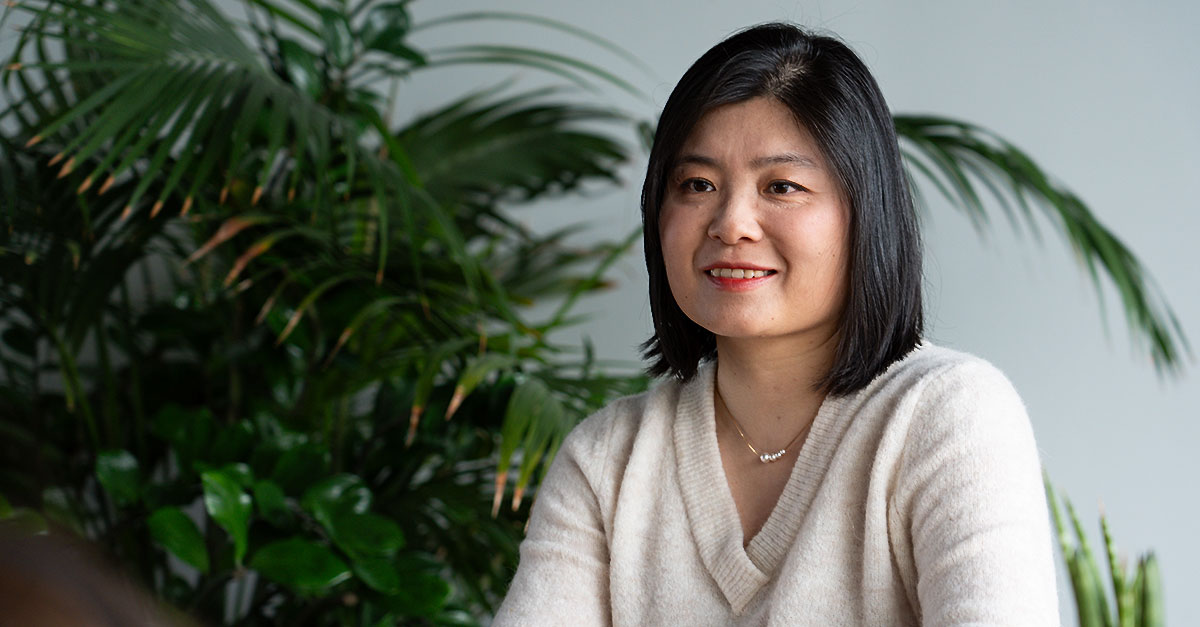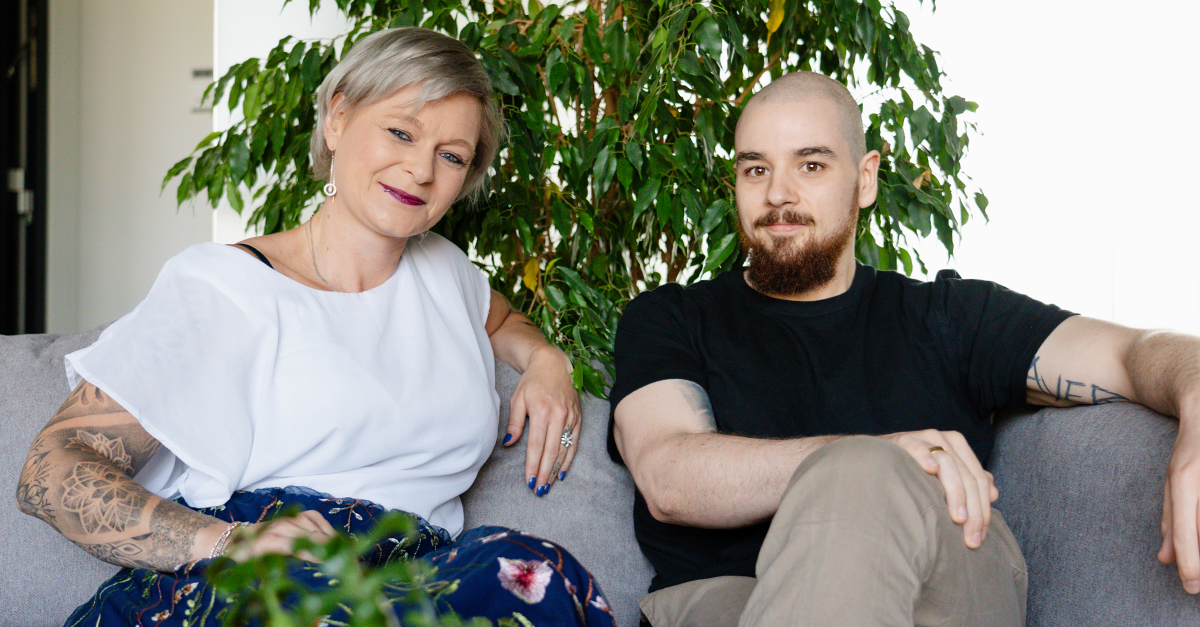Full Stack Developer: Tasks at SupplyOn with Fangfang & Israel

What was your career like before you joined SupplyOn?
Israel: I have been working as a Full Stack Software Developer for 5 years and have been with SupplyOn since 2023. I studied industrial engineering. During my studies, I already gained experience in software development through part-time jobs, internships and working student activities. I work remotely from Berlin.
Fangfang: Before I started as a full stack software developer, I worked as a UI/UX designer in the IT industry for 8 years. For example, I managed websites in-house for various companies.
There I already worked closely with full stack developers and discovered my interest in coding, but had no opportunity to gain professional experience in programming.
Through the Full Stack Developer Java Bootcamp at neue fische GmbH, I managed to make a career entry at SupplyOn.
How did you become interested in SupplyOn?
Fangfang: The Java and React focus of my current project fits perfectly with the knowledge I acquired in the bootcamp. The frameworks are applied in a modern way at SupplyOn, which appealed to me.
I also live near Hallbergmoos near Munich, so SupplyOn is also ideal for me in terms of location, as I personally like going to the office.
Israel: I was looking for a new professional challenge as a full stack developer and heard about SupplyOn through a recruitment agency.
In addition to the industry and working environment, what was exciting for me was that I could continue to apply my previous knowledge of the .NET framework, but also learn a lot of new things in my role.
The possibility of flexible working hours and remote working from Berlin were also reasons for me to choose SupplyOn.
What does a typical working day as a Full Stack Developer at SupplyOn look like?
Israel:
I usually start at around 8am and start coding. At 10 o’clock we have our stand-up. This is when we briefly discuss the current status with the rest of the team. We clarify who would like to go into more detail with whom in the team. After the stand-up, individual follow-up appointments are then arranged. The daily routine is then divided into meeting-free time, during which I program, and coordination meetings with team colleagues and the product owner.
Fangfang:
As we work with Scrum and therefore in sprints, there are also monthly meetings. At the end of each sprint, usually every other week on Fridays, we have a review meeting. This is where we present our results from the last two weeks to the Product Owner. This is followed by the retrospective. At this meeting, the Scrum Master, we as Full Stack Developers and our Product Owner come together and discuss how we can improve our collaboration. On the following Monday, we then start planning the next sprint. What all SupplyOn departments have in common is that all Scrum teams meet quarterly in line with SAFe (Scaled Agile Framework) to discuss dependencies and risks and agree on the overall sprint planning for the next three months.
Find out more about the role of Full Stack Software Developer at SupplyOn in Hallbergmoos near Munich on our Full Stack Developer careers page.
How is the balance between front-end and back-end development handled in your position?
Israel: When a user story or feature is implemented, it is the exception rather than the rule if only front-end or only back-end development is involved. Accordingly, I develop in both the front-end and back-end areas.
At the beginning of the two-week cycle, during sprint planning, we decide which user stories are to be implemented.
The tasks are clustered into sub-tasks. Sometimes we divide the front-end and back-end development between us, depending on the strengths and preferences of the team members. But we also implement both.
Fangfang: For me, as a career changer coming from UI/UX, I am currently focusing on deepening my front-end knowledge.
I would estimate that I do 70% front-end development and 30% back-end development. With my direct team colleague, it’s the other way around.
As full-stack software developers at SupplyOn, we have the opportunity to independently determine the proportion of programming we do. A 50%/50% split is not compulsory.
What projects and challenges are you currently working on and which technologies and tools are you using specifically in the technology stack?
Israel: In my team, we are currently working on a traceability application. This helps our customers to trace products down to the raw material level in order to solve quality problems quickly and continuously improve product quality.
In the back-end, we write the software solution in the .NET Core Framework, ultimately developing a REST API that is then used by the front-end or other services. We use React for front-end development. We are free to choose the development environment. I prefer Visual Studio and Visual Studio Code. Colleagues of mine work with JetBrains Rider, for example. Our applications then run on Azure Web Services.
We carry out several customer projects simultaneously in the area of traceability. The application was developed a few years ago for a first customer and was expanded this year to include various use cases and multi-client capability.
The aim now is to make the application as usable as possible for all customers and to support customers already working with the product in integrating the new features into their tool landscape.
At the same time, a new product, the Product Carbon Footprint application, was developed. The challenge here was to certify it and ensure compatibility with the CatenaX industry network.
Fangfang: My team is developing a Capacity Management solution for customers in the automotive and aerospace sectors. The application supports our customers in increasing the resilience of their supply chain through smart capacity management of suppliers.
We use Spring Boot, Gradle and Docker as frameworks for back-end development. We program with IntelliJ as our development environment. Our databases are also based on Microsoft Azure Web Services. We also code the front end with React. We develop the software solution on a customized basis according to our customers’ requirements.
In our case, the customers have specific ideas about implementation and compatibility, so our challenge is to create the application end-to-end in a target-oriented and functional way.
What I really like about SupplyOn is the professionalism of our Product Owner when it comes to working with Scrum: it is a real practice that we can only concentrate on software development and our sprint phases and the Product Owner cushions any issues that go beyond this.

What does the code review and quality assurance process look like?
Fangfang: There is a code review for every task. After pushing my code, my team colleagues read it and approve it before merging and branching can take place in the main branch. We have a high test quota, which must be met as a minimum. We write a test for almost every method.
Israel: It’s similar for us. We use Git for version management. We use Azure DevOps to host our Git repositories. New or changed code is always developed in a separate branch first, then we create pull requests.
After running automatic pipelines, teammates check the code. This is done at least according to the four-eyes principle. We then usually run several feedback loops.
After the (also automated) installation in the QA environment, further manual tests can be carried out. At the same time, the product owner can also test the new developments here and provide feedback on whether the requirements have been implemented as expected.
How do you use the opportunities for professional development and training?
Fangfang: Every two weeks on Thursday afternoons, we have a cross-team tech meeting and receive training from internal and external development teams on innovations, such as library updates or similar.
Individual training requests can also be discussed with our manager. I am attending a React conference this year to keep up to date with trends in this framework and to get inspiration for my own work from keynote speeches.
There are also standard training courses that we go through as Full Stack Software Developers at SupplyOn, such as SAFe training.
Israel: I also find the exchange with colleagues for internal training very valuable. Most recently, I wanted to learn more about automated testing in front-end development and used learning platforms to do so.
Self-organized learning and access to learning platforms are supported by SupplyOn. Our Scrum Master colleague Angila, for example, used it to deepen her knowledge of Docker and Kubernetes and tells you more about it in her experience report on Agile Learning.
What is the corporate culture and working environment like in the team?
Israel: Very friendly, personal but also very professional. The team members are always open to feedback and I find the collaboration very constructive. There is very good interaction with colleagues across all hierarchical levels.
Fangfang: My team is very international. There are colleagues from China – like me -, India, Turkey, France, Ukraine and Germany. Everyone helps each other. I really like that.
What flexibility do you have in terms of working hours and location?
Israel: The flexibility of working hours and location was one of the main reasons why I chose SupplyOn. The working day is not overloaded with meetings and the meeting-free time is completely flexible and can be arranged individually.
I can work from anywhere in Germany and several weeks a year from other European countries. I have already used mobile working abroad this year and would like to make even more use of it in the future.
Why would you recommend SupplyOn as an employer to Full Stack Software Developers?
Israel: SupplyOn is an established company, but also a company with a lot of potential that is still in the process of developing and where there are also many opportunities to help shape software development. SupplyOn is a very forward-looking company that attaches great importance to ensuring that we as employees continue to develop. This is also very important to me personally and is practiced here.
Fangfang: Due to its size, there are still very flat hierarchies and there is comparatively little bureaucracy. In particular, lateral entrants or Software Developers with a previous focus on front-end or back-end development are given individual on-the-job training opportunities and can grow with their tasks.
Like Fangfang and Israel, would you like to use your Full Stack Developer skills to help shape the collaboration of global supply chains in a sustainable way?
Apply now for our Full Stack Developer position:
Senior Full Stack Software Developer (w/m/d)



